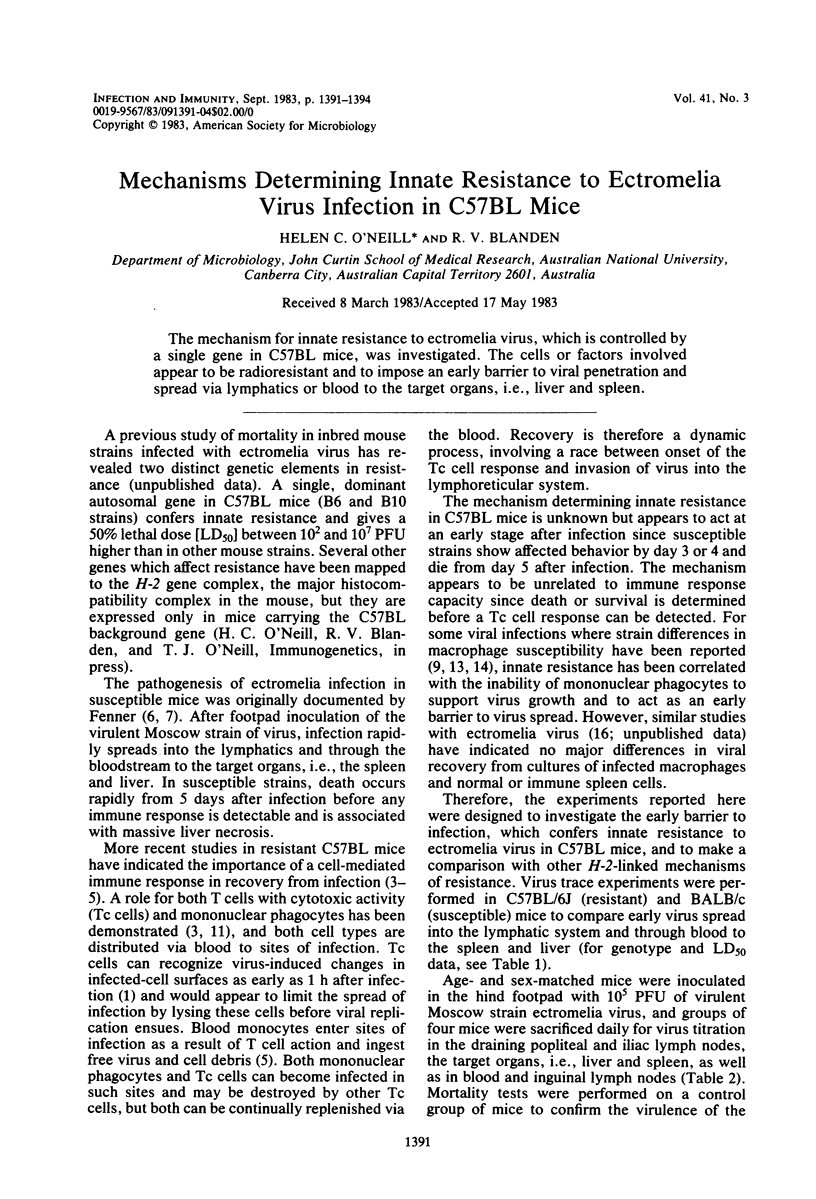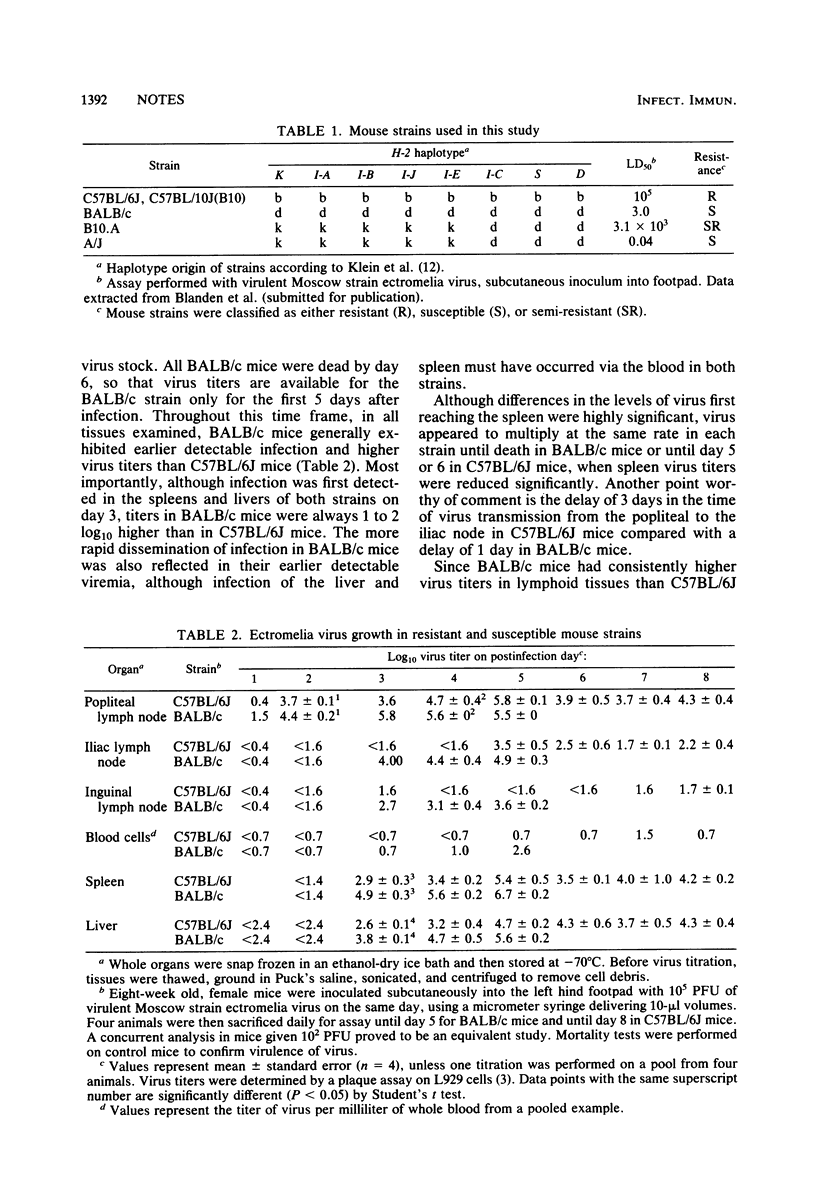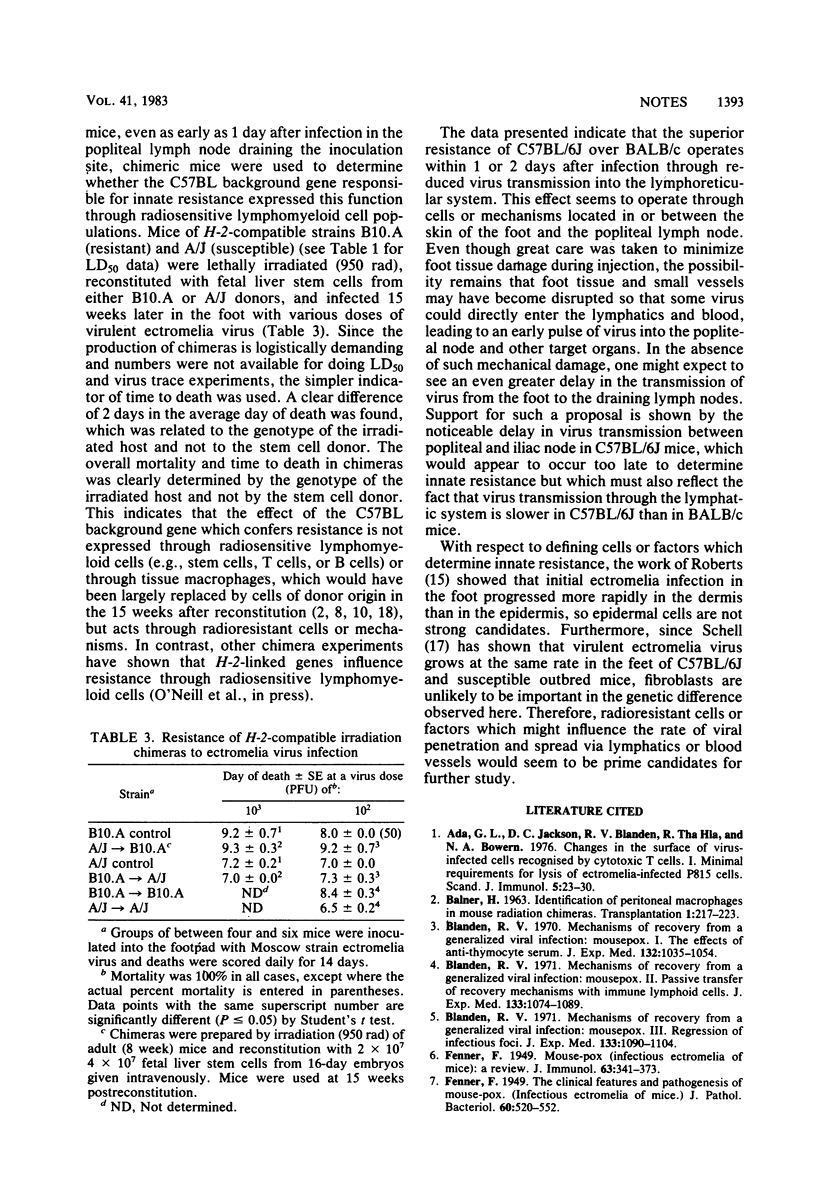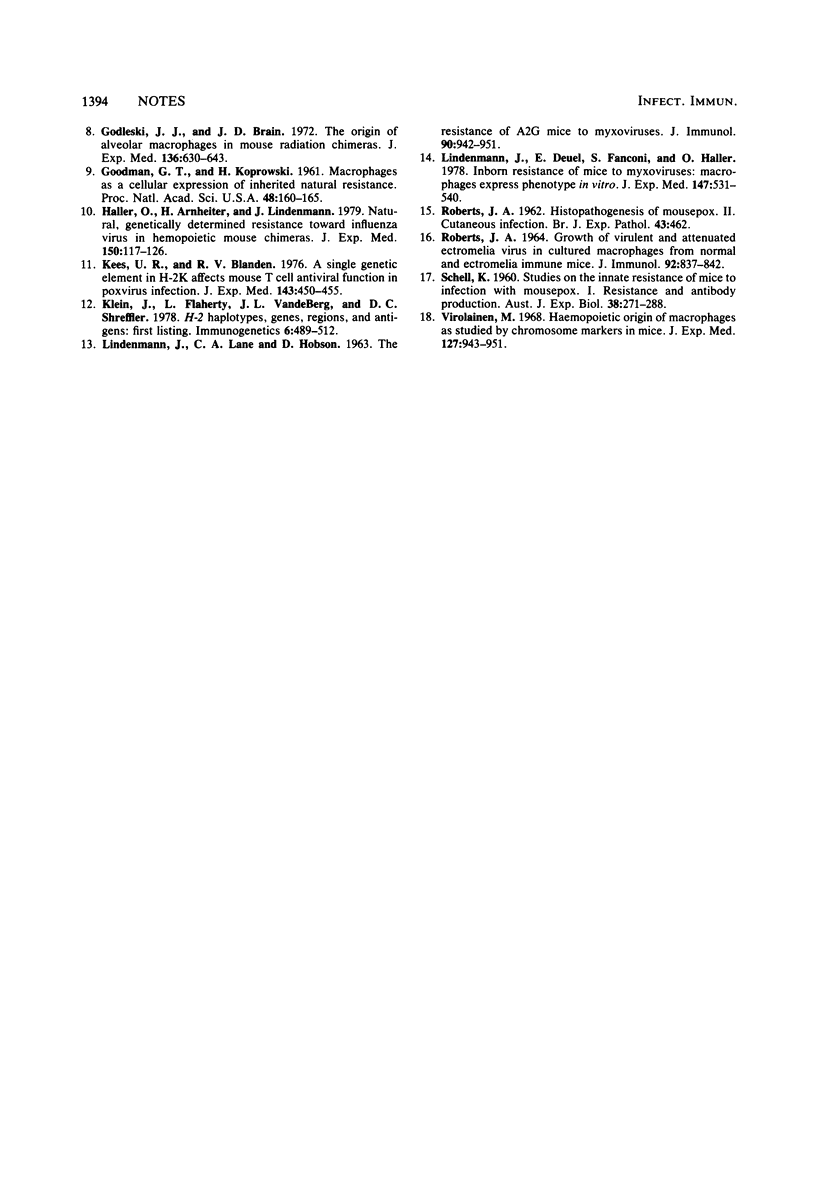Abstract
The mechanism for innate resistance to ectromelia virus, which is controlled by a single gene in C57BL mice, was investigated. The cells or factors involved appear to be radioresistant and to impose an early barrier to viral penetration and spread via lymphatics or blood to the target organs, i.e., liver and spleen.
Full text
PDF



Selected References
These references are in PubMed. This may not be the complete list of references from this article.
- Ada G. I., Jackson D. C., Blanden R. V., Hla R. T., Bowern N. A. Changes in the surface of virus-induced cells recognized by cytotoxic T cells. I. Minimal requirements for lysis of ectromelia-infected P-815 cells. Scand J Immunol. 1976;5(1-2):23–30. doi: 10.1111/j.1365-3083.1976.tb02988.x. [DOI] [PubMed] [Google Scholar]
- BALNER H. Identification of peritoneal macrophages in mouse radiation chimeras. Transplantation. 1963 Apr;1:217–223. doi: 10.1097/00007890-196301020-00009. [DOI] [PubMed] [Google Scholar]
- Blanden R. V. Mechanisms of recovery from a generalized viral infection: mousepox. 3. Regression infectious foci. J Exp Med. 1971 May 1;133(5):1090–1104. doi: 10.1084/jem.133.5.1090. [DOI] [PMC free article] [PubMed] [Google Scholar]
- Blanden R. V. Mechanisms of recovery from a generalized viral infection: mousepox. II. Passive transfer of recovery mechanisms with immune lymphoid cells. J Exp Med. 1971 May 1;133(5):1074–1089. doi: 10.1084/jem.133.5.1074. [DOI] [PMC free article] [PubMed] [Google Scholar]
- FENNER F. Mouse-pox; infectious ectromelia of mice; a review. J Immunol. 1949 Dec;63(4):341–373. [PubMed] [Google Scholar]
- GOODMAN G. T., KOPROWSKI H. Macrophages as a cellular expression of inherited natural resistance. Proc Natl Acad Sci U S A. 1962 Feb;48:160–165. doi: 10.1073/pnas.48.2.160. [DOI] [PMC free article] [PubMed] [Google Scholar]
- Godleski J. J., Brain J. D. The origin of alveolar macrophages in mouse radiation chimeras. J Exp Med. 1972 Sep 1;136(3):630–643. doi: 10.1084/jem.136.3.630. [DOI] [PMC free article] [PubMed] [Google Scholar]
- Haller O., Arnheiter H., Lindenmann J. Natural, genetically determined resistance toward influenza virus in hemopoietic mouse chimeras. Role of mononuclear phagocytes. J Exp Med. 1979 Jul 1;150(1):117–126. doi: 10.1084/jem.150.1.117. [DOI] [PMC free article] [PubMed] [Google Scholar]
- Kees U., Blanden R. V. A single genetic element in H-2K affects mouse T-cell antiviral function in poxvirus infection. J Exp Med. 1976 Feb 1;143(2):450–455. doi: 10.1084/jem.143.2.450. [DOI] [PMC free article] [PubMed] [Google Scholar]
- LINDENMANN J., LANE C. A., HOBSON D. THE RESISTANCE OF A2G MICE TO MYXOVIRUSES. J Immunol. 1963 Jun;90:942–951. [PubMed] [Google Scholar]
- Lindenmann J., Deuel E., Fanconi S., Haller O. Inborn resistance of mice to myxoviruses: macrophages express phenotype in vitro. J Exp Med. 1978 Feb 1;147(2):531–540. doi: 10.1084/jem.147.2.531. [DOI] [PMC free article] [PubMed] [Google Scholar]
- ROBERTS J. A. GROWTH OF VIRULENT AND ATTENUATED ECTROMELIA VIRUS IN CULTURED MACROPHAGES FROM NORMAL AND ECTROMELIAIMMUNE MICE. J Immunol. 1964 Jun;92:837–842. [PubMed] [Google Scholar]
- ROBERTS J. A. Histopathogenesis of mousepox. II. Cutaneous infection. Br J Exp Pathol. 1962 Oct;43:462–468. [PMC free article] [PubMed] [Google Scholar]
- SCHELL K. Studies on the innate resistance of mice to infection with mousepox. I. Resistance and antibody production. Aust J Exp Biol Med Sci. 1960 Aug;38:271–288. doi: 10.1038/icb.1960.29. [DOI] [PubMed] [Google Scholar]
- Virolainen M. Hematopoietic origin of macrophages as studied by chromosome markers in mice. J Exp Med. 1968 May 1;127(5):943–952. doi: 10.1084/jem.127.5.943. [DOI] [PMC free article] [PubMed] [Google Scholar]


